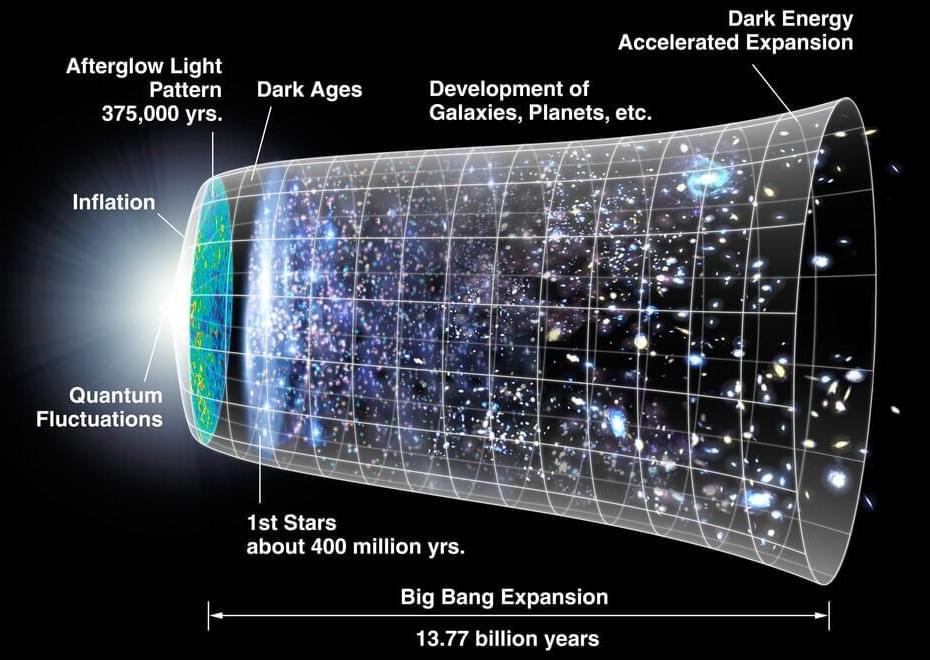Dec 7, 2022
Good Morning 2033
Posted by Kelvin Dafiaghor in categories: augmented reality, health, robotics/AI, virtual reality
Good Morning, 2033 — A Sci-Fi Short Film.
What will your average morning look like in 2033? And who hacked us?

Good Morning, 2033 — A Sci-Fi Short Film.
What will your average morning look like in 2033? And who hacked us?
A grand vision in robot learning, going back to the SHRDLU experiments in the late 1960s, is that of helpful robots that inhabit human spaces and follow a wide variety of natural language commands. Over the last few years, there have been significant advances in the application of machine learning (ML) for instruction following, both in simulation and in real world systems. Recent Palm-SayCan work has produced robots that leverage language models to plan long-horizon behaviors and reason about abstract goals. Code as Policies has shown that code-generating language models combined with pre-trained perception systems can produce language conditioned policies for zero shot robot manipulation. Despite this progress, an important missing property of current “language in, actions out” robot learning systems is real time interaction with humans.
Ideally, robots of the future would react in real time to any relevant task a user could describe in natural language. Particularly in open human environments, it may be important for end users to customize robot behavior as it is happening, offering quick corrections (“stop, move your arm up a bit”) or specifying constraints (“nudge that slowly to the right”). Furthermore, real-time language could make it easier for people and robots to collaborate on complex, long-horizon tasks, with people iteratively and interactively guiding robot manipulation with occasional language feedback.
Women are playing a significant role in the field of Artificial Intelligence. Take a look at the well-known women personalities in the AI field here.
How far away could an artificial brain be? Perhaps a very long way off still, but a working analogue to the essential element of the brain’s networks, the synapse, appears closer at hand now.
That’s because a device that draws inspiration from batteries now appears surprisingly well suited to run artificial neural networks. Called electrochemical RAM (ECRAM), it is giving traditional transistor-based AI an unexpected run for its money—and is quickly moving toward the head of the pack in the race to develop the perfect artificial synapse. Researchers recently reported a string of advances at this week’s IEEE International Electron Device Meeting (IEDM 2022) and elsewhere, including ECRAM devices that use less energy, hold memory longer, and take up less space.
The artificial neural networks that power today’s machine-learning algorithms are software that models a large collection of electronics-based “neurons,” along with their many connections, or synapses. Instead of representing neural networks in software, researchers think that faster, more energy-efficient AI would result from representing the components, especially the synapses, with real devices. This concept, called analog AI, requires a memory cell that combines a whole slew of difficult-to-obtain properties: it needs to hold a large enough range of analog values, switch between different values reliably and quickly, hold its value for a long time, and be amenable to manufacturing at scale.

In 1916, Einstein finished his Theory of General Relativity, which describes how gravitational forces alter the curvature of spacetime. Among other things, this theory predicted that the Universe is expanding, which was confirmed by the observations of Edwin Hubble in 1929. Since then, astronomers have looked farther into space (and hence, back in time) to measure how fast the Universe is expanding – aka. the Hubble Constant. These measurements have become increasingly accurate thanks to the discovery of the Cosmic Microwave Background (CMB) and observatories like the Hubble Space Telescope.
Astronomers have traditionally done this in two ways: directly measuring it locally (using variable stars and supernovae) and indirectly based on redshift measurements of the CMB and cosmological models. Unfortunately, these two methods have produced different values over the past decade. As a result, astronomers have been looking for a possible solution to this problem, known as the “Hubble Tension.” According to a new paper by a team of astrophysicists, the existence of “Early Dark Energy” may be the solution cosmologists have been looking for.
Continue reading “‘Early Dark Energy’ Could Explain the Crisis in Cosmology” »
A quantum approach to data analysis that relies on the study of shapes will likely remain an example of a quantum advantage — albeit for increasingly unlikely scenarios.

https://www.youtube.com/watch?v=a2_CePTZZoI
The big bang is one of the most fascinating topics you can bring up when conversing with scientists and astronomers. This is because the theory talks about how the whole universe started in the first place. However, the event that led to the big bang is one thing that is being argued among scientists today.
For this reason, the James Webb Telescope was called in to make some findings about the big bang. The JWST found something quite alright, but it wasn’t something the scientist had prepared their minds for. What did the James Webb Telescope discover, and in what way would it affect the Big Bang Theory?
Continue reading “James Webb Just Detected A Huge Structure Older Than The Universe!” »
Horgan: Okay, maybe I have been too critical. But can you tell readers, briefly, why they should take panpsychism seriously?
Mørch : Physicalism and dualism are the two main alternatives to panpsychism.
Physicalism implies that consciousness doesn’t exist. Physical science cannot capture what it’s like for someone to have conscious experiences, such as seeing red or being in pain, or any of the qualitative or subjective features of consciousness. So if consciousness is physical, it’s not qualitative or subjective, and therefore not really consciousness after all.
The asteroid strike simulation website lets users customize material, size, and speed then witness the destruction, in the name of science.
